Содержание
- 2. Market Analysis Process Step 1: Define the Product (property productivity analysis) Step 2: Define users of
- 3. Step 1: Define the Product (Property Productivity Analysis) Site and Building Analysis Location Analysis land use
- 4. Step 2: Define users of the Property and Trade Area (Market Delineation) Trade Area Circles Identify
- 5. Step 3: Forecast Demand Factors Population and Households Forecast number of households in trade area Population
- 6. Step 3: Forecast Demand Factors Population and Households, con’t Are size of household and income trends
- 7. Step 3: Forecast Demand Factors Population and Households, con’t Reliability forecasts are questionable beyond one year
- 8. Step 3: Forecast Demand Factors Population and Households, con’t Information Sources U.S. Census of Population www.census.gov
- 9. Step 3: Forecast Demand Factors Mean Income per Household Income Total potential retail sales volume depends:
- 10. Step 3: Forecast Demand Factors Mean Income per Household, con’t Procedure to estimate income: Modification Modify
- 11. Step 3: Forecast Demand Factors Mean Income per Household, con’t Procedure to estimate income: Inferred Current
- 12. Step 3: Forecast Demand Factors Mean Income per Household, con’t Procedure to estimate income: Weighted Average
- 13. Step 3: Forecast Demand Factors Income Spent on Retail Goods & Services Consumer Expenditure Survey US
- 14. Step 3: Forecast Demand Factors Income Spent on Retail Goods & Services Sources of Data Consumer
- 15. Step 3: Forecast Demand Factors Most Probable Percentage of Retail Expenditures for Subject-Center type goods Types
- 17. Step 3: Forecast Demand Factors Estimate percentage of retention of sales in the primary trade area
- 18. Step 3: Forecast Demand Factors Estimate Sales required per Square Foot of Supportable Retail Space Objective:
- 19. Step 3: Forecast Demand Factors Estimate Total Supportable Retail Space in the Primary and Secondary Trade
- 21. Step 4: Inventory and Forecast Competitive Supply Purpose Catalogue all current and potential space competing for
- 22. Step 4: Inventory and Forecast Competitive Supply Estimate of existing competitive space Standing inventory in primary
- 23. Step 4: Inventory and Forecast Competitive Supply Procedure Identify all competitive retail space in the subject’s
- 24. Step 4: Inventory and Forecast Competitive Supply
- 25. Step 4: Inventory and Forecast Competitive Supply Analyze Potential Competition new competitive space that could come
- 26. Step 5: Analyze the Interaction of Supply and Demand Residual Demand Analysis Estimate of the amount
- 27. Step 6: Forecast Subject Capture Techniques Share of Market Based on size of the Center Example:
- 28. Steps in Residual Demand Analysis
- 30. Скачать презентацию
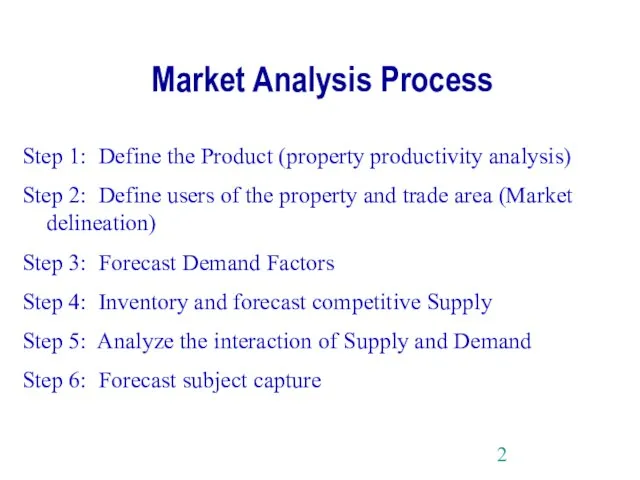


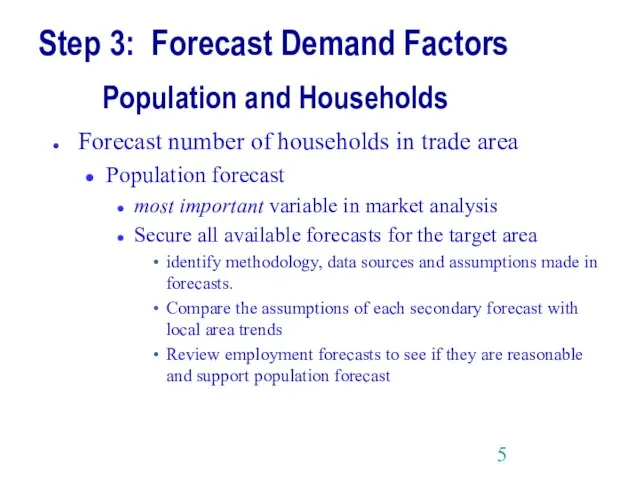
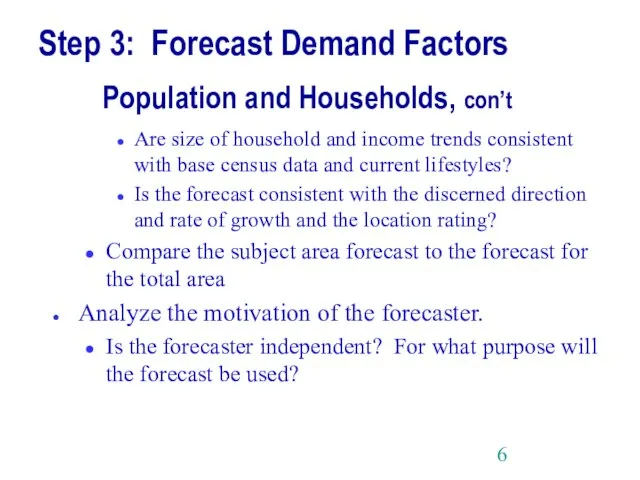
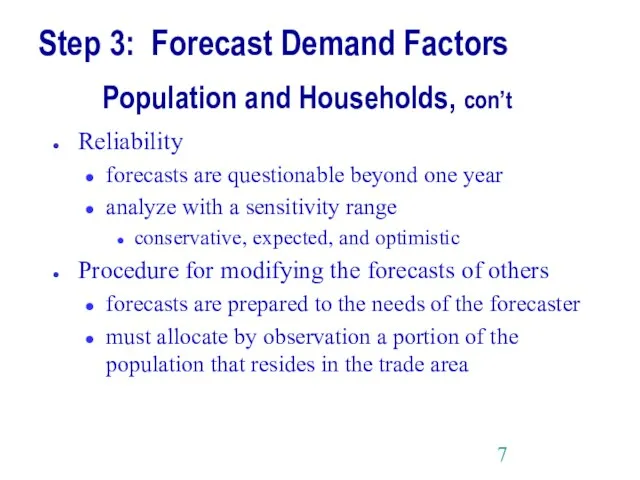
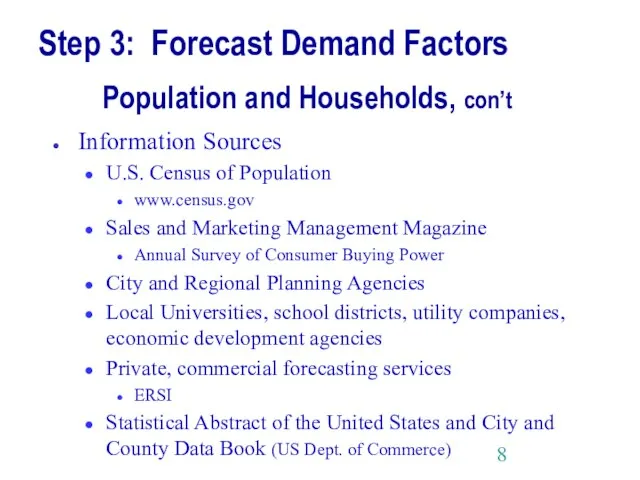

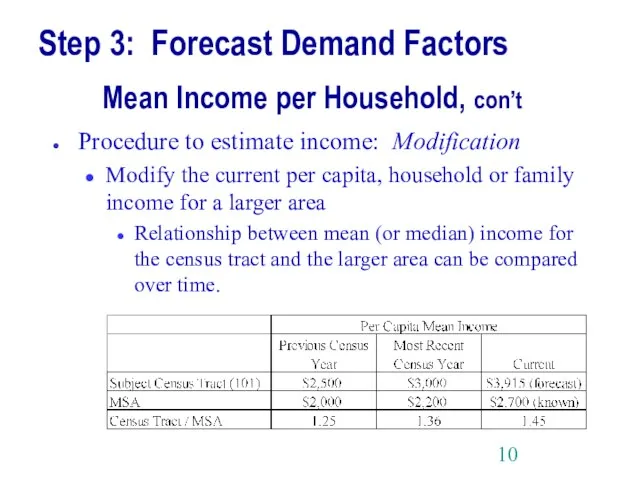


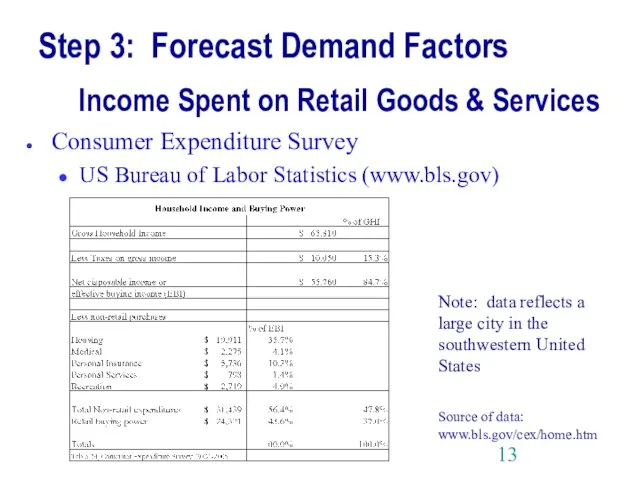
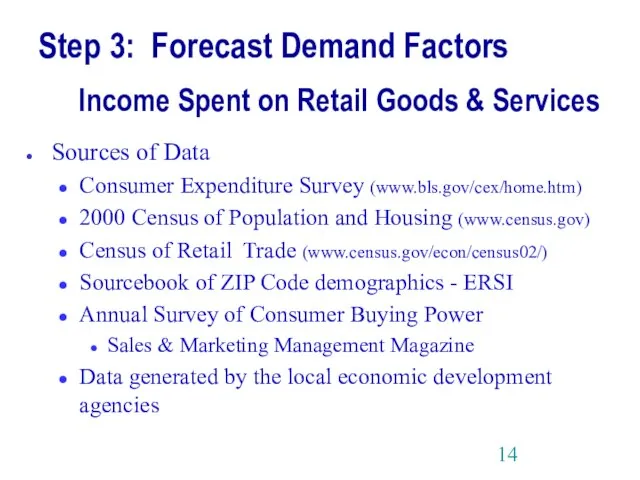
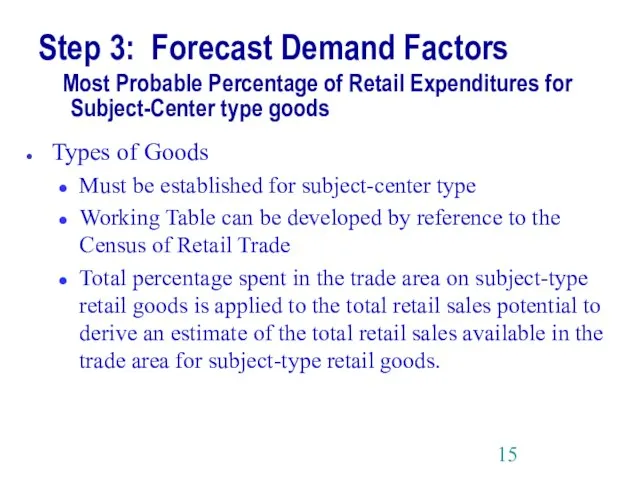
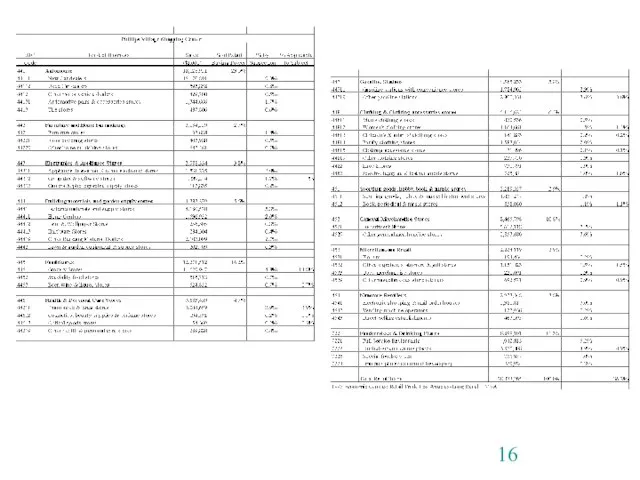

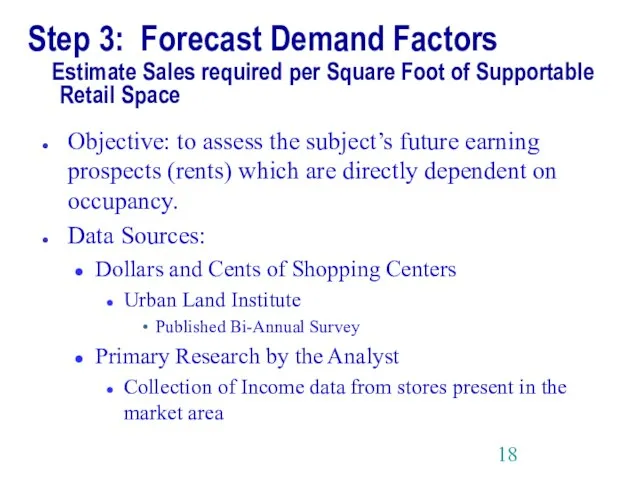

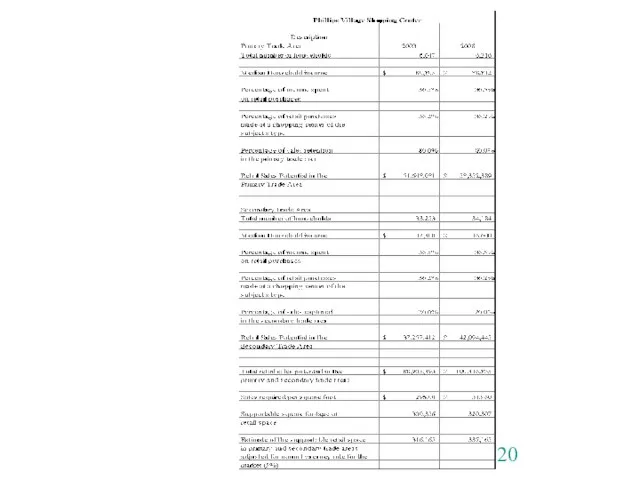
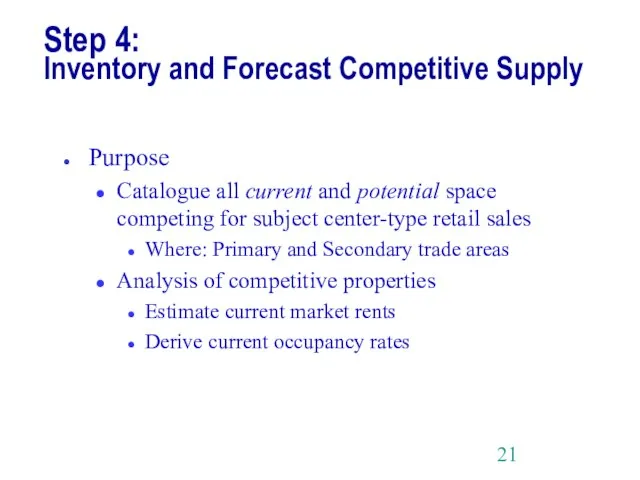


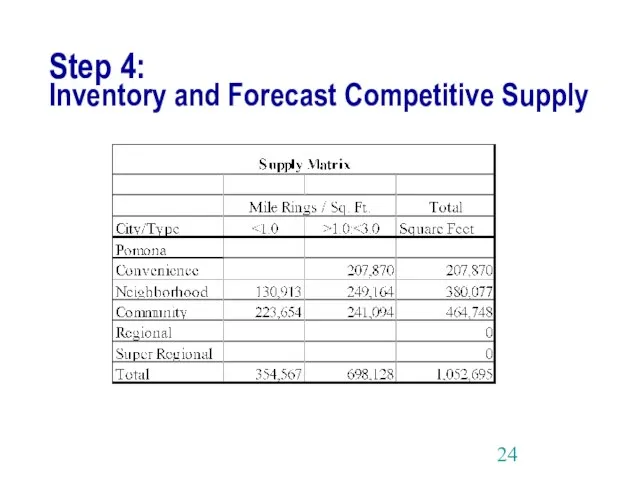
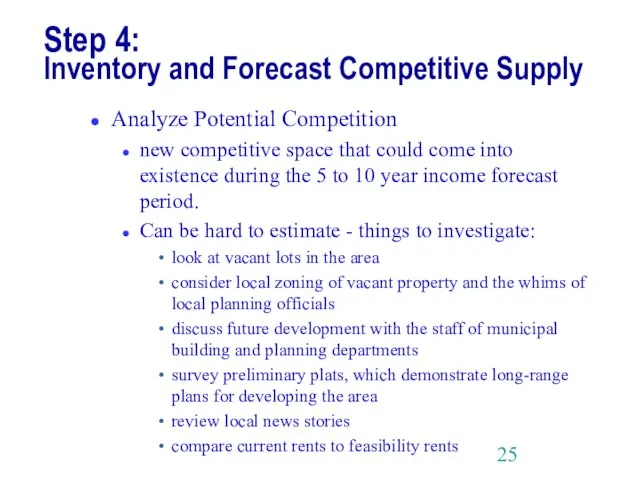

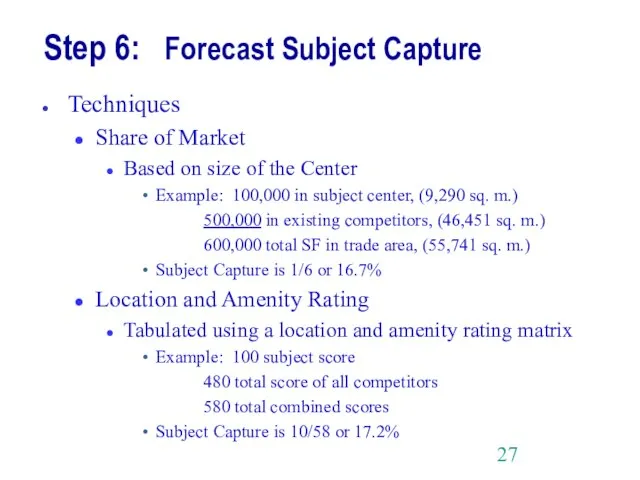
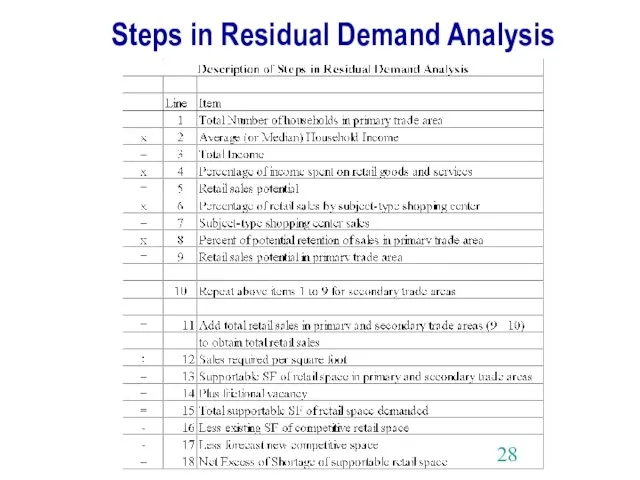
 Калейдоскоп (творческий проект) Организатор проекта: Кокшарова Анастасия Сергеевна,
Калейдоскоп (творческий проект) Организатор проекта: Кокшарова Анастасия Сергеевна,  Подготовка технического задания на разработку электронных курсов
Подготовка технического задания на разработку электронных курсов AL-1035WH - - Произведение Искусств
AL-1035WH - - Произведение Искусств Перевод государственных услуг в электронный вид Заседание Рабочей группы Комиссии при Президенте Российской Федерации по моде
Перевод государственных услуг в электронный вид Заседание Рабочей группы Комиссии при Президенте Российской Федерации по моде Некапитальные спортивные объекты на арендуемых участках
Некапитальные спортивные объекты на арендуемых участках Планирование рекламной компании
Планирование рекламной компании НАРКОТИКИ
НАРКОТИКИ Презентация на тему Родовые общины охотников и собирателей
Презентация на тему Родовые общины охотников и собирателей  Тест по физической культуре
Тест по физической культуре Gaols,objectives
Gaols,objectives  Презентация на тему: Работа классного руководителя с родителями
Презентация на тему: Работа классного руководителя с родителями Марка No. 1 в США
Марка No. 1 в США Автоматизация регистрации клиентов в гостинице
Автоматизация регистрации клиентов в гостинице У.Шекспир «Ромео и Джульетта»
У.Шекспир «Ромео и Джульетта» 14 Марта день рек
14 Марта день рек Тема: «Басни И.А. Крылова»
Тема: «Басни И.А. Крылова» Спортивный инвентарь
Спортивный инвентарь Ирина Викторовна Балыбердина Урок музыки в 8 классе по теме: «Колокольный звон на Руси»
Ирина Викторовна Балыбердина Урок музыки в 8 классе по теме: «Колокольный звон на Руси» Оптика
Оптика DIVERSITY OF PLANT FORMS
DIVERSITY OF PLANT FORMS  Журнальный столик
Журнальный столик Исторический жанр: А. Рябушкин
Исторический жанр: А. Рябушкин Конкурентные стратегии
Конкурентные стратегии Охрана окружающей среды
Охрана окружающей среды С праздником мужества и чести
С праздником мужества и чести Слайд-презентацияСОЦИОЛОГИЯ
Слайд-презентацияСОЦИОЛОГИЯ Основные сведения о порошковой металлургии
Основные сведения о порошковой металлургии